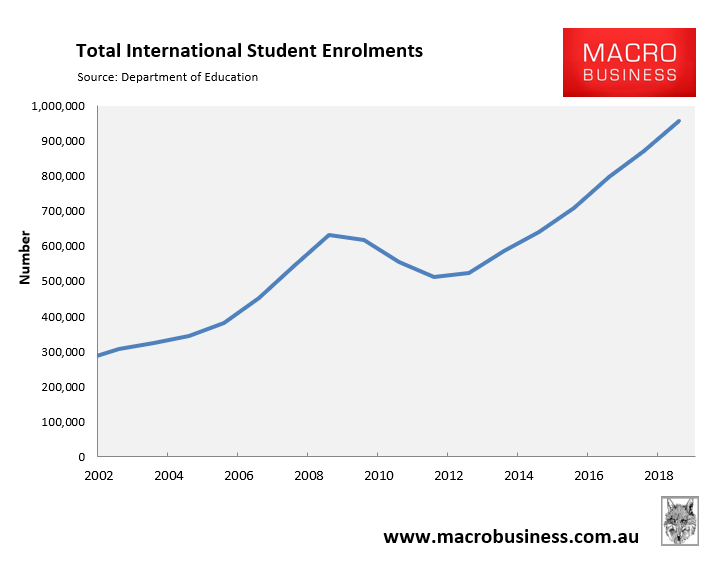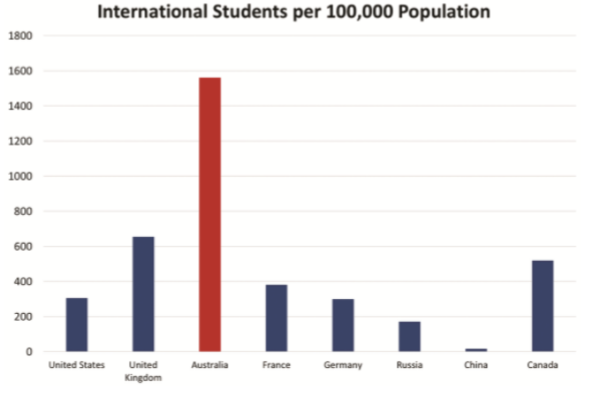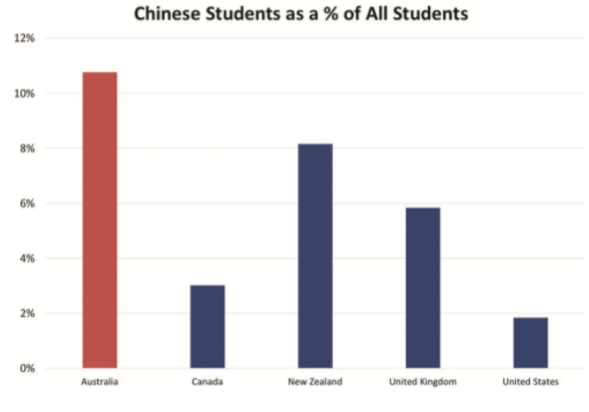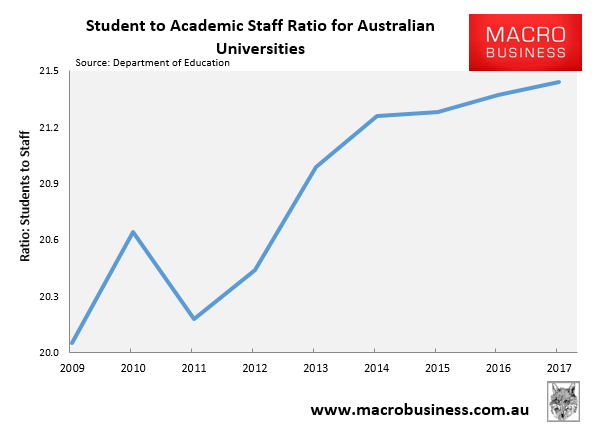David Grant, president of the Australian Business Deans Council – a lobby group representing the business schools that graduate more than half of all international students – has penned a self-serving piece in The Australian demanding greater taxpayer support for the international student industry:
Internationally, Australia’s hard-won reputation for high-quality research and education is at risk.
Domestically, a failure to act will compromise our universities’ capacity to contribute to the economic and social fabric of the nation and, critically, their ability to play a major role in our post-COVID-19 recovery…
Our first priority must be to ensure that we show unequivocally how much we value their personal, cultural, social and economic contributions to Australia…
Inevitably, Australia is being compared unfavourably with countries such as Canada and New Zealand that have captured international students in their safety nets while we have left many falling.
By year’s end we stand to lose tens of thousands of students…
We must demonstrate how much we value and care about our international students before the damage being done becomes irreparable.
Any objective analysis of Australia’s international student industry would conclude that numbers are far too high and needed to be brought down.
Australia had an absurd 960,000 international students enrolled across Australia at the end of 2019:

Whereas according to Associate Professor Salvatore Babones, Australia’s concentration of both international and Chinese students dwarfs other advanced nations:


This over-exposure to international students has seen university entry and teaching standards crater as our educational institutions have catered to the lowest common denominator.
It has also left domestic students languishing in classrooms full of non-English speakers, while also carrying the load in group assignments.
The common misconception that local students are being subsidised by the international students also needs correcting.
It would be a subsidy if, and only if, the cost of teaching local students was greater than the revenue received for teaching a local student, with funds from international students making up the shortfall. And this is evidently not the case.
The revenue generated from local students greatly exceeds the amount of money spent on teaching said local students.
A considerable portion of ALL student fees are diverted to funding research and administrators, alongside building shiny new buildings.
Meanwhile, spending on actual teaching staff has plummeted:

Universities desperately need a crisis like this.
They are no longer serious educational institutions, but rather businesses run for profit by third-rate administrators whose main goal is to put bums on seats and maximise fee revenue. That has often meant flooding them with students whose academic standards are often woeful, which has obviously damaged Australia’s productivity.
If that means some universities fail, so be it. A full reckoning and restructuring of the tertiary education sector is unambiguously required.
Get rid of the administrators and bring back the educators.

